How Schools Can Promote Vaccination and Address Hesitancy: A 10-Point Plan that Puts Equity First
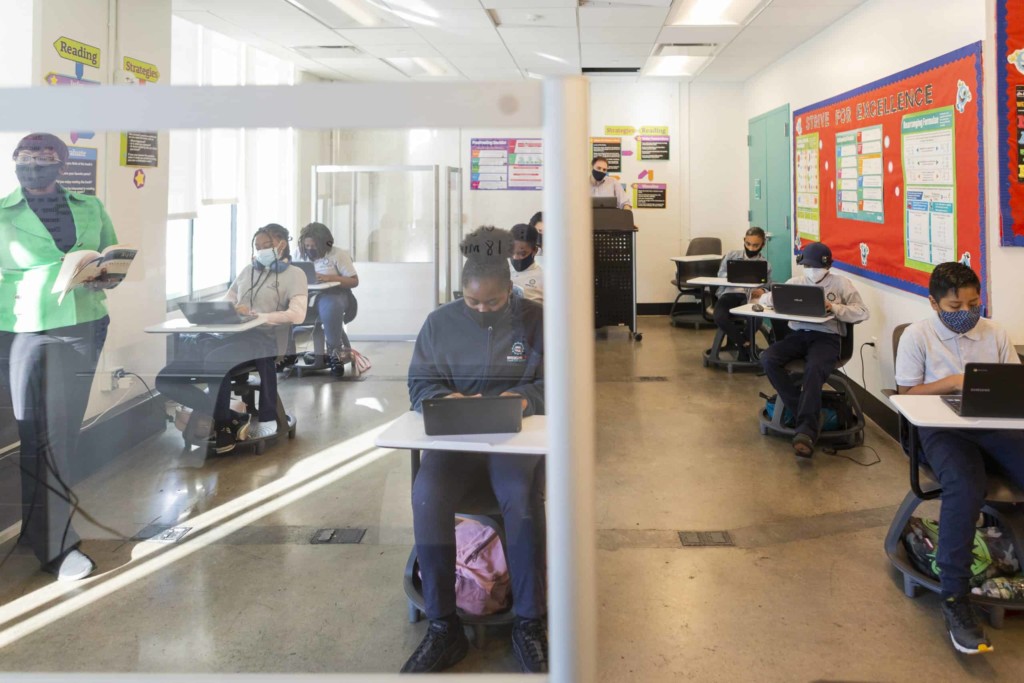
After 12 months of grappling with the COVID-19 pandemic, the promise of vaccines has brought us to the brink of a better future.
While there currently are three different vaccines available in the United States, we have a long way to go to achieve herd immunity, which scientists say would involve having 70-80 percent of the population vaccinated. Achieving these levels consistently across different communities and regions will be difficult. Some people are hesitant to get the shots because they are skeptical of the efficacy, the risk, and even the ethics of the shots. Others lack access to quality health information and care, which hinders access to vaccines. Meanwhile, a host of coronavirus variants present potential new threats. There are also challenges with rollout: While roughly 12 percent of the population is fully vaccinated as of this writing, 88 percent is not.
Jean Desravines, CEO of New Leaders, said that as more students return to the classroom, “public schools can play a critical role in supporting the vaccination effort by helping local communities understand and address concerns, and by supporting those who don’t have access to healthcare and information about the vaccines.”
It is critical that schools embrace the role we can play to address hesitancy, and do so with a focus on equity, by treating every student and their families with respect and dignity.
“Schools are uniquely positioned to do this,” wrote Alicia T. Johnson, president and chief operating officer at KIPP NYC. “No other institution has the depth of relationships in the communities where students live, play, learn, and grow.”
Michele Cahill of the XQ Institute also reflected on schools’ broad reach. “As a highly-valued community institution schools have the capacity to touch so many people from so many different walks of life,” Cahill wrote.
To be clear: This will be no easy task. Most schools are already struggling with reopening. Schools are directing maximum effort to ensure that every student receives high-quality education, while working to safeguard the health, safety, and well-being of students, families, teachers, and staff.
Still, school is part of daily life for many people in American communities. This connection gives school leaders an opportunity to address vaccine hesitancy and promote uptake by faculty, staff, students, and extended families—all of which could help the country reach that important herd immunity.
“Communities have a responsibility to prioritize the health and well-being of every educator and student, so they in turn can better focus on teaching and learning,” wrote Jean-Claude Brizard, President and CEO of Digital Promise.
To do this effectively, every school effort must center equity. Schools should work to understand the needs and concerns of different people in their community, and elevate trusted local voices who can support vaccine efforts with empathy and compassion. By prioritizing equitable and innovative approaches to embracing vaccination, schools can promote the health and well-being of everyone.
In collaboration with our team at Brooklyn Laboratory Charter Schools, a public charter school in Brooklyn, New York, EquityByDesign.Org has created this 10-point plan to help schools promote vaccination and address hesitancy. This plan is informed by insights and resources from practitioners and experts across health and education. We hope that as more schools communicate more frequently about the vaccines, families will gain the knowledge to make informed decisions for themselves and their loved ones.
1. Seek to understand and address vaccine hesitancy.
While many Americans can’t wait to get their COVID-19 vaccines, others are more skeptical. Some of the skepticism comes from doubts about the dangers of COVID-19, and fear of vaccines in general. Hesitancy has a political hue in some corners. In other households, hesitancy stems from legitimate concerns based on the history of discriminatory medical treatment and research, including the Tuskegee Syphilis Study. The apprehension many Black and brown communities feel over the vaccine is an understandable response to the experience of systemic racism; many have firsthand experience with discriminatory medical treatment.
For this reason, schools must seek to understand and address vaccine hesitancy head-on.
“This means getting to know concerns and hopes at a human level, and bringing empathy and compassion to difficult conversations,” said Cecile Kidd, bursar at Brooklyn LAB.
Alphonce O’Bannon, leadership and equity coach at Iowa BIG and founder of Leaders Believers Achievers Foundation, noted that “by building a better understanding of the challenges families are facing, you can deepen your empathy and respond more effectively to questions and concerns.”
Schools can seek to raise awareness by offering localized versions of BET’s recent special about the COVID-19 vaccine and elevating frequent messaging and education about the importance of a vaccine.
Carlos Moreno, co-executive director of Big Picture Learning, pointed out that families have been dealing with two pandemics over the past year: COVID-19 and racism. “How we show people that we care about their well-being, and honor their fears, can help all of us overcome feelings of isolation,” he said.
This may take time, and schools should try different avenues to reach out to families, using surveys, factsheets, infographics, explanatory videos, and offer other (virtual) gatherings to air, discuss, and understand concerns. “People need to hear as early as possible and as often as possible that the vaccine is a good thing,” said Leslie-Bernard Joseph, CEO of Coney Island Preparatory Academy in New York. “If we create interest and excitement and trust, people will be more willing to get it.” It’s worth noting that access is also an important issue to address. In The New York Times, Dr. Rhea Boyd warned that a “hyper-focus on hesitancy implicitly blames Black communities for their undervaccination, and it obscures opportunities to address the primary barrier to COVID-19 vaccination: access.” This means schools must help communities understand how and why racism has hindered access to quality healthcare over time, and help them make appointments and/or get access to the vaccine.
2. Take advantage of classroom time.
The strategy of raising awareness and educating the school community about vaccines can trickle up through students who learn from teachers through a COVID-specific curriculum.
Max Koltuv, principal at SOAR Education Partners, said the key to influence is trust. “Those who are hesitant to get vaccinated are unlikely to be swayed by people they do not know well or trust deeply,” he said. “Their children and grandchildren are some of the people they are closest to in the world. If we can empower students with science-based knowledge about viruses and vaccines, they are in the position to make a difference in the conversations they have with people in their families and communities who are hesitant to get vaccinated.”
As a former school principal, Koltuv understands the nuances of this dynamic. That’s why he led an EquityByDesign.org team that created a 15-lesson science unit for middle and high school students that covers the risks of the virus and the promise of the vaccine.
Science is a great class for students to analyze public data from COVID-19 vaccine clinical trials. Schools also can use history and humanities courses to teach about the racist past of public health in the U.S., and about the roles inequity and systemic racism have played in the spread of COVID-19. Les Lynn, director of Argument-Centered Education, which supports schools nationally in the use of argument and debating strategies, added that class debates can also help engage students. “By framing the debate around COVID-19 vaccine hesitancy, the way we have in our open source resources, we can simultaneously build trust in vaccines within our public school communities and serve our public school students’ academic and social growth needs,” Lynn said.
Once students have studied vaccines, educators can have students work on reports, videos, and presentations about the importance of vaccinations over time. Teachers could even connect students with community newspapers to write articles about the school’s vaccination push. May Mark, director of school success at XQ Institute, said this sort of program could alleviate vaccine hesitancy in the community and empower students to “use their voice and to leverage their newly acquired knowledge to become ambassadors themselves for their community and beyond.”
3. Run campaigns promoting vaccination for school communities.
Resources are powerful weapons in the war against disinformation about COVID-19, according to Arun Ramanathan, CEO of Pivot Learning.
“With the right leadership and resources, schools can mount safe, effective, and comprehensive campaigns to encourage parents and community members to view vaccination as critical to our future,” he said.
Earl Martin Phalen, CEO of the George and Veronica Phalen Leadership Academies, agreed, recommending that “schools spare no effort to encourage the people in their community to get vaccinated quickly and equitably.”
One way to do this is by partnering with local departments of health and healthcare systems to help spread the word and raise credibility.
Sharing data is an important part of this effort. Schools should amplify how vaccination is going in their home state (this graphic offers up-to-the-minute details), and run a science-first community health campaign to promote vaccination uptake.
Another crucial step in this process: building community confidence. Kelly King, partnerships manager at Brooklyn LAB, said schools must work to build their community’s trust in the vaccines by identifying, curating, modifying, and helping distribute “culturally competent,” multilingual educational materials.
At the same time, school officials must combat campaigns aimed at delivering misinformation and disinformation to the public about the safety and efficacy of vaccines. Messages about the vaccination process help, too. The more community members know about side effects and what the vaccination experience is like, the more likely they might be to opt for a vaccine.One good example of the kind of campaign that might work recently came from an unlikely source: Israeli Prime Minister Benjamin Netanyahu.
Harvard University School of Public Health’s Alyssa Bilinski, said messaging is critical. “It’s important to provide nonjudgmental information and ideally have community members hear it multiple times,” said Bilinski, who studies viral spread in schools. “The first time they hear a message, they might not trust it, but if they hear it as part of a formal campaign or from someone else, they might begin to trust it more.”
4. Use school buildings and campuses as community vaccination centers.
President Biden has promised that every American adult who wants a vaccine can get one by the end of May. This means that every community in America will need multiple vaccine sites. Schools should be among them—Biden said it himself: “Think of places that are convenient and accessible: School gyms, sports stadiums, community centers.”
This wouldn’t be the first time a school opened its doors as a vaccination center; in 1954, the first polio vaccine was administered at an elementary school in Pittsburgh. Schools even could set up drive-through or walk-through vaccination centers in parking lots, much like three superintendents suggested in a recent op-ed for The Hill.
In that piece, superintendents Susan Enfield (Highline), Anthony Hamlet (Pittsburgh), and Darryl Willaims (Baltimore County), pointed out that this approach allows community members to get vaccinated in places they know and trust, and it could encourage people to make vaccination a family event. The push could be exhaustive, with “school buildings and sports facilities being used as vaccination centers outside of school hours and on weekends,” wrote Michael Magee, CEO of Chiefs for Change.
Doing this would also increase vaccination sites to fulfill the demand. “The overwhelming evidence is that the efficacy of vaccination and demand for shots are extremely high,” wrote Ian Rowe, resident fellow at American Enterprise Institute and founder of Vertex Partnership Academies. Put simply, schools can provide opportunities for multiple generations to receive protection against COVID-19 in a single afternoon.
Enfield concluded, “Schools are the heart of their communities, and as such can and should play a critical role in supporting and promoting vaccination against COVID 19.”
5. Encourage, mandate, and/or incentivize vaccines for employees.
Like any employer, schools must encourage all employees to get vaccinated as soon as they are eligible to do so.
There are numerous ways to do this. First, schools should create conditions for worker vaccination through an employer pledge (or even an employer mandate). Second, districts that have flexibility in their budgets should incentivize employees (a la Robert Litan) to get vaccines; one school in Louisiana offered teachers $100 cash to get the shot. Third, schools should provide employees with paid time off and subsidized transportation to get vaccinated during business hours if necessary. Businesses are also taking this approach. In February, Target guaranteed workers up to four hours of pay and free Lyft rides to get vaccinated.
Dr. Lisa Thomas, associate director of educational issues with the American Federation of Teachers, noted that education workers are more likely to get vaccinated if they don’t have to choose between a paycheck and a vaccine. “For many of our [teachers], if they’re not at work and not on the clock, they’re not getting paid,” she said. “It’s up to schools to make it easier for them to get vaccines as part of the workday.”
Motivating employees means taking time to listen. Michelle Hernandez, CEO of Leading Elephants, said it’s critical to keep an open mind to what community members are saying and feeling.“Schools encouraging vaccination without tuning into [or listening to] their stakeholders may miss key human needs under the stress and overwhelm of the COVID-19 pandemic,” she said. “We often underestimate the emotional journey of the change.”
6. Form partnerships to address specific equity concerns.
Vaccinating the American public against COVID-19 is the largest public health project in our nation’s recent history. If schools are to play a role, it’s critical that they reach out to public and private partners to support vaccination and mitigation efforts. This can include municipal governments and local healthcare providers, as well as local businesses, churches, sports teams, community-based organizations, unions, and media companies.
To support the equitable access to vaccines, schools should look for partners who can help support hard-to-reach populations and communities most at-risk for COVID-19. These vulnerable populations are disproportionately composed of people of color.
Partners can help administer vaccines, encourage and facilitate vaccinations, and provide reliable information. In underserved communities that lack access to reliable healthcare, partners also can address barriers to vaccination by providing convenient and accessible vaccination sites, funding clinical and community-based outreach, and providing necessary support for people before and after they get their shots.
Thomas from the AFT noted that these types of partnerships can be lifelines for Black and brown communities who may not have the opportunity to prioritize vaccines.“When people work all day or they don’t have access to healthcare, it’s important to meet them where you know they’ll be—in community centers, the lobbies of housing complexes, and places like that,” she said. These types of partnerships also can benefit Tribal Nations, which often administer their own healthcare and have struggled throughout the pandemic.
Erin Whalen, principal of Da Vinci RISE, said this approach can help young people who are in precarious situations.”Vaccination efforts must center the unique needs of youth navigating the most challenging types of disruptions to academic journeys, including those in the foster care system, juvenile justice system, or experiencing homelessness,” he wrote recently. “There must be deep consideration to access issues, the digital divide, and mistrust rooted in structural racism and generational mistreatment. Black, Hispanic, and Native Americans are dying from COVID-19 at nearly three times the rate of white Americans.”
7. Use quality, vetted resources to engage your school community.
EquityByDesign.org is partnering to create a trusted and centralized hub of information to help ensure schools have access to the credible information they need to support every member of their community in feeling confident about vaccinations. The site curates high-quality resources from trustworthy medical, public, and media institutions for schools and school leaders to share..
Arthi Krishnaswami, the project lead for the School Vaccine Hub and founder of the Community Success Institute, has been an instrumental part of this effort from the beginning. Transparency with the community is important, she noted. “Building trust and confidence in the vaccination process and ecosystem is a critical step toward broad uptake of the COVID-19 vaccine,” she said. “We know that schools are a central point of contact for many communities, and with the right information, they can be empowered to play a crucial role in building trust in their communities.”
Erin Mote, executive director of InnovateEDU, agreed, noting that partners from across the Educating All Learners Alliance (EALA) have prepared quality resources that aim to support school communities to understand and embrace vaccination.
8. Embrace science.
In his March 11, speech, President Biden put it bluntly: “Listen to Dr. Fauci.” The reference was specific to Dr. Anthony Fauci, director of the U.S. National Institute of Allergy and Infectious Diseases. But Biden’s broader message was to embrace science.
This is a message that has resonated with Quanaysha Ash, biology teacher at Brooklyn LAB.”I’ve been a science educator for many years,” Ash said. “I’ve studied immunology and taught it. It would be of great ignominy if I failed to support our community, country, and researchers in educating all on the importance of being vaccinated. An effective COVID-19 response requires that students, teachers, families and other school leaders become scientifically literate as it pertains to vaccinations. It is our duty to protect each other and ourselves.”
Elsewhere across the country, educators echoed these sentiments, and pointed out how using this moment as a teaching tool can engage students in science more broadly.
“The importance of understanding vaccination creates opportunities for hands-on, STEM learning”, wrote Shatoya Ward, principal of Purdue Polytechnic High School. “At Carmen Schools of Science and Technology, we believe all students deserve chances to gain proficiency in scientific inquiry, grow as critical thinkers, and gain reverence for evidence,” wrote CEO Jennifer Lopez.
Schools should encourage faculty and staff to engage in social media advocacy that shares credible, accessible science on vaccines and immunizations. Having community members share pictures of vaccine cards (with identifying information blacked out) is one step; launching a COVID-19 Vaccination Ambassador program is another way for trusted people to promote scientific evidence on vaccines.
In the past few months, many cities have launched these programs to highlight the stories and experiences of trusted messengers who have received the vaccine and are working to encourage others to do the same. Schools can do this too; whether the programs are formal or informal, they celebrate science and those who embrace it.
Finally, schools need to recognize that some people are skeptical of science overall. To address this, schools must understand and acknowledge the shortcomings of the past, and also listen to the concerns of people who don’t trust science.
Jonathan Flynn, Brooklyn LAB’s manager of family and community affairs, suggested that school staff start by reaching out to hesitant families and working to understand the reasons behind their distrust in medicine, hospitals, and doctors.
Will Baker, faculty member at NYU, agreed. “The essential task is to create a transparent and inclusive environment that serves to treat people’s doubts with respect and not derision and couple effective listening and effective science in our messaging strategy,” he said. “Communicating our awareness of the mixed history of vaccination will be vital to creating a future where vaccination becomes the norm.”
9. Continue COVID-19 prevention practices.
Even as the country ramps up vaccinations, schools must continue to practice and promote virus-mitigation strategies such as physical distancing, mask-wearing, and regular testing. Schools should also ensure faculty, staff, and students have access to regular, reliable, and free COVID-19 testing.
This approach complies with CDC recommendations for everyone—people who have been fully vaccinated and those who have not yet received a complete dosage. As Dr. Fauci himself has said, physical distancing “is not a light switch; it’s a dial.” Schools and their respective communities must understand how to turn the dial up or down in response to the degree of viral spread, even now.
Jin-Soo Huh, partner at the Learning Accelerator and Parabola Project lead, said “following COVID-safe practices is the best way to keep the greatest number of people safe.” The Parabola Project’s page on ventilation includes a school air quality assessment guide done in partnership with the Healthy Buildings Program, and the topics page features sanitization, masks and PPE, COVID-19 protocols, and more.
Dwayne Andrews, senior vice president at Patrick B. Jenkins and Associates, added that this approach is especially important to protect people who have been most vulnerable to COVID-19. “When we say to our children that Black Lives Matter, we’re not saying that Black lives—mine, my children, my friends—matter more than any other lives, but that Black lives matter just as much as any other lives,” Andrews shared. “Both BLM and COVID-19 have shown us that we can only survive by collectively valuing all lives and caring enough about each other to take proactive steps to keep our communities safe, healthy, and thriving.”
10. Actively plan to protect vulnerable populations in your community.
The people who are most vulnerable to COVID-19 have been older Americans, those with pre-existing conditions, and people of color.
Julia Freeland Fisher, director of education at Christensen Institute, said that schools can use data to understand and target their community’s most vulnerable members with messaging, outreach, and, in some cases, mobile vaccination clinics. “Schools can tap into their deep relationships in communities to ensure that everyone—not just the well-connected, wealthy, and privileged—receive the access they deserve.” Fisher said.
Dr. Amar Dhand, physician and social scientist at Harvard Medical School, said word of mouth is another important way to reach vulnerable populations.“Communicating with families about vaccination should better equip them more confidently to make informed decisions,” he said.
Bennison Ntsakey, director of academics at Brooklyn LAB, suggested getting students to help reach out to their loved ones.“Schools can empower students to participate in this effort by launching programs and/or lesson plans that have students reach out specifically to nursing homes, grandparents, and older folks about how they, too, can stop the spread,” said Ntsakey.
Dr. Ryan Padrez, assistant clinical professor of pediatrics at Stanford University and doctor at The Primary School in East Palo Alto, California, said schools could model this on the school recycling programs of many years ago. “Recycling took off in the 1990s largely because students came home with blue bags and encouraged their parents to do it,” Padrez said. “My one worry is that change that took a few years, while we need a massive change in behavior quickly. ”
Conclusion
By assisting in providing greater access to vaccines for everyone, addressing vaccination hesitancy through education, and raising awareness about the importance of vaccination, public schools can play a critical role in helping the United States achieve herd immunity against COVID-19. Commitment to equity—a push to make sure all members of a school community receive the same amount of opportunity—must be central to this effort. There’s only one way our society will make a better path and emerge from this public health crisis: together.
For more see:
- How to Reopen Schools: A 10-Point Plan Putting Equity at the Center
- To Reopen, America Needs Laboratory Schools
- Preparing to Reopen: Six Principles That Put Equity at the Core
- Reopening Schools: A Scheduling Map for Educators to Plan the Who, What, When, Where, and How of Learning this Fall
- How We Move Forward: Practicing Three Inclusive, Anti-Racist Mindsets for Reopening Schools
- Schools Need a Success Coach for Every Learner
- How Schools Can Help Cultivate Learner Identity and Agency
- Preparing for a Healthy and Safe Return to School: Public School Facilities Planning in the Era of COVID-19
- Educating All Learners Alliance Launches Flagship Site, Shares Personas Educators Can Use to Understand Students’ Lived Experience During COVID-19
- Five Principles to Help Provide Our School Communities With the Communications They Deserve
Stay in-the-know with innovations in learning by signing up for the weekly Smart Update. This post includes mentions of a Getting Smart partner. For a full list of partners, affiliate organizations and all other disclosures, please see our Partner page.




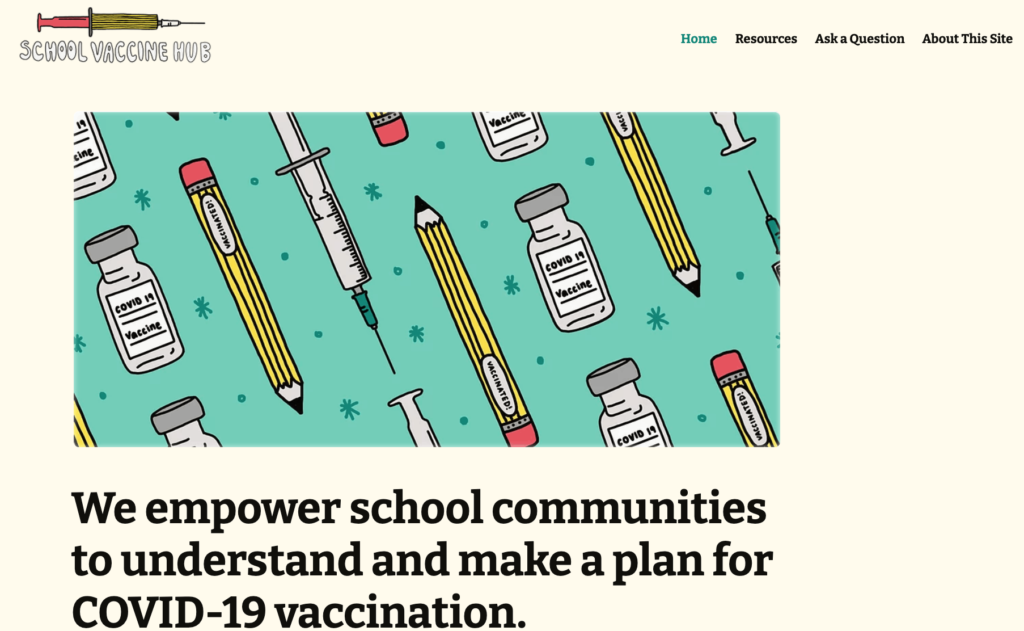
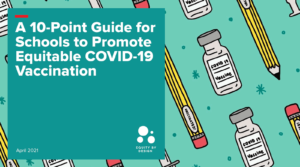
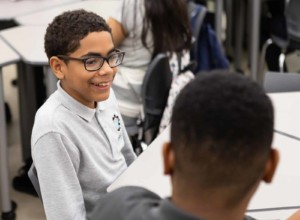

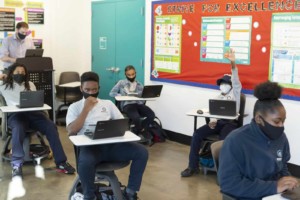
Shammy Peterson
You made a good point when you said that school is part of daily life for many people in American communities, so they must grab the opportunity to address vaccine hesitancy. This reminded me of my children who are in college. They both want to feel protected against COVID-19, especially since they love going around. I will be sure to book vaccination appointments for them. https://www.salisburymedicalcentre.com.au/service